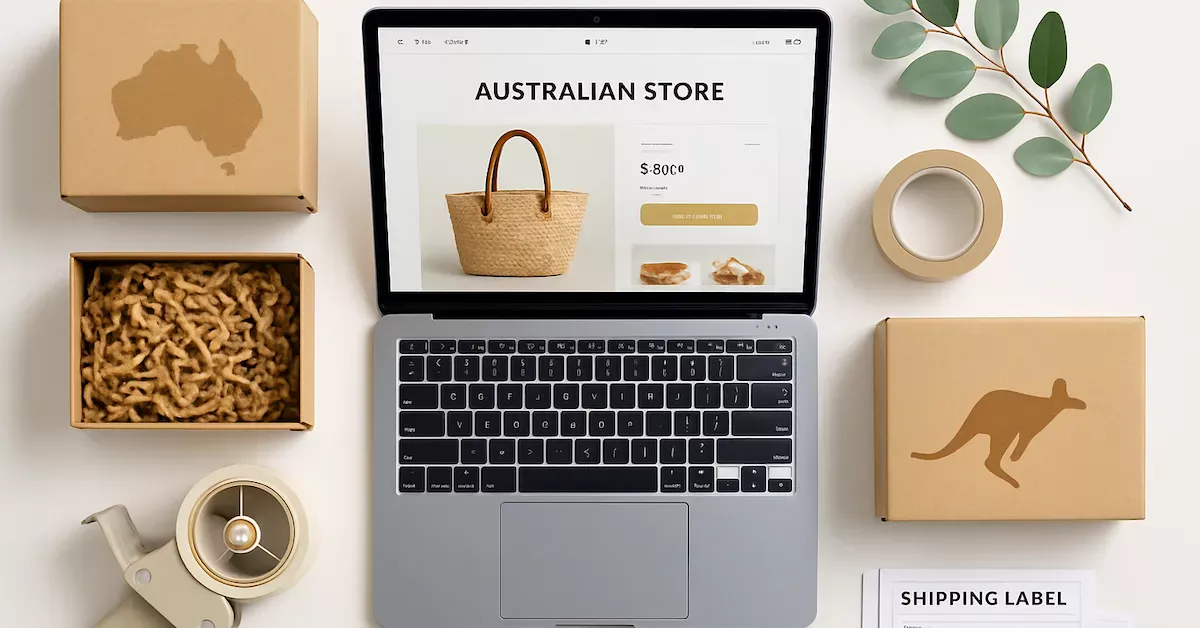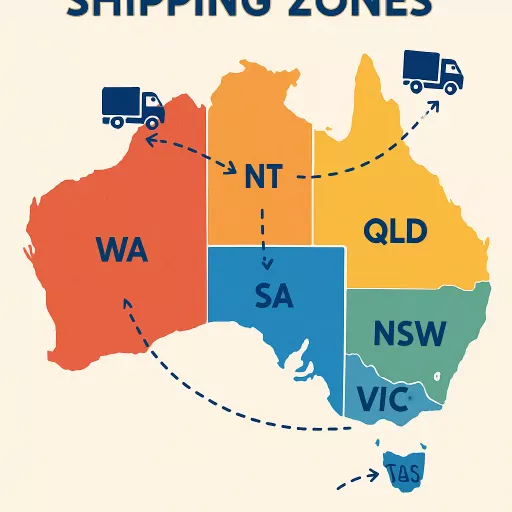Setting up shipping options for Australian e-commerce is one of the most important steps for any online business Down Under. Whether you’re just starting out or looking to fine-tune your shipping strategy, getting this right can make a world of difference to your customer experience, conversion rates, and profit margins. In this guide, we’ll break down everything you need to know about configuring domestic and international shipping for your Aussie e-commerce store, with a focus on practical tips, local insights, and the latest best practices.

Why Shipping Matters for Australian E-Commerce
Shipping isn’t just about getting products from A to B. In Australia, with its vast distances and unique logistics challenges, shipping options can influence everything from cart abandonment rates to repeat purchases. Customers expect clear, affordable, and reliable delivery—so your shipping setup needs to be spot on.
According to Shopify’s 2025 shipping guide, fulfilment and shipping logistics can represent a major expense, but they’re also a key part of your brand’s reputation. A smooth shipping experience can turn first-time buyers into loyal fans, while a clunky or expensive process can send them running to your competitors.
Understanding the Basics: Domestic vs International Shipping
Before you dive into the nitty-gritty, it’s important to understand the two main types of shipping you’ll be dealing with:
- Domestic shipping: Sending orders within Australia, whether it’s across the city or from Perth to Cairns.
- International shipping: Sending orders to customers overseas, which involves extra steps like customs, duties, and international carriers.
Each comes with its own set of considerations, costs, and opportunities.
Choosing the Right Shipping Carriers in Australia
Australia has a range of reliable shipping carriers, each with their own strengths. The most popular options for e-commerce businesses include:
- Australia Post: The go-to for most small businesses, offering a wide range of domestic and international services, including express and tracked options.
- Sendle: A carbon-neutral courier service that’s become a favourite for small to medium e-commerce stores, especially for metro-to-metro deliveries.
- CouriersPlease, Fastway (Aramex), DHL, FedEx, UPS: These are great for specific needs, such as bulk shipments, international express, or business accounts.
When choosing a carrier, consider factors like delivery speed, coverage, tracking, insurance, and integration with your e-commerce platform. For a detailed comparison, check out this comprehensive guide to Australian shipping companies.
Setting Up Domestic Shipping: Step-by-Step

1. Define Your Shipping Zones
Start by mapping out your shipping zones. In Australia, this usually means splitting your rates by state, metro vs regional, or even postcode. Some platforms let you get really granular, which is handy if you want to offer free or discounted shipping to certain areas.
2. Decide on Your Shipping Methods
The main domestic shipping methods are:
- Standard shipping: The most affordable, but can take several days, especially for remote areas.
- Express shipping: Faster, but more expensive. Great for customers who need their order in a hurry.
- Same-day or next-day delivery: Available in some metro areas, often through specialist couriers.
You can offer one, two, or all of these options—just make sure your checkout makes it clear what each method costs and how long it’ll take.
3. Calculate Your Shipping Rates
There are a few ways to set your rates:
- Flat-rate shipping: Charge the same amount for every order, regardless of size or destination. This is simple and predictable, but you’ll need to make sure you’re not losing money on big or remote orders.
- Real-time carrier rates: Use your carrier’s API to calculate the exact shipping cost at checkout. This is fair, but can be confusing for customers if the price jumps around.
- Free shipping: Absorb the cost yourself, or build it into your product prices. You can also offer free shipping over a certain order value to encourage bigger baskets.
For more on calculating rates, see Shopify’s shipping strategy guide.
4. Packaging and Presentation
Don’t underestimate the power of good packaging! Not only does it protect your products, but it’s also a chance to reinforce your brand. Consider eco-friendly options, branded boxes, or even a handwritten thank-you note. Keep packaging as light and compact as possible to save on shipping costs—Shopify recommends using poly mailers for soft goods and sturdy boxes for fragile items.
5. Tracking and Insurance
Most Aussie carriers offer tracking as standard, but double-check what’s included. For high-value items, consider adding insurance for peace of mind. Customers love being able to track their order from dispatch to delivery.
Setting Up International Shipping: What You Need to Know

International shipping opens up a world of opportunity, but it also comes with extra complexity. Here’s how to get it right:
1. Decide Where You’ll Ship
Start small—maybe just New Zealand, or a handful of countries where you know there’s demand. As you get more confident, you can expand your reach. Use your website analytics to see where your international visitors are coming from.
2. Understand Customs, Duties, and Taxes
Every country has its own rules about what can be imported, and how much duty or tax is payable. In most cases, your customer will be responsible for paying these fees on delivery (known as Delivered Duty Unpaid, or DDU). However, you can also offer Delivered Duty Paid (DDP), where you collect the fees upfront and handle the paperwork.
Be upfront about these costs in your shipping policy to avoid nasty surprises and abandoned carts. For more on this, see Shopify’s international shipping guide.
3. Choose Your International Carriers
Australia Post, DHL, FedEx, and UPS are the main players for international shipping. Each offers different speeds, prices, and levels of tracking. Some e-commerce platforms (like Shopify) offer discounted international rates through their integrations, which can save you a bundle.
4. Prepare Your Documentation
International shipments need extra paperwork, including customs declarations and commercial invoices. Your carrier or e-commerce platform will usually generate these for you, but it’s your responsibility to make sure they’re accurate. Incorrect paperwork can lead to delays or even confiscated goods.
5. Set Your International Shipping Rates
You can use flat rates, real-time carrier rates, or free shipping (if your margins allow). Just remember that international shipping is usually much more expensive than domestic, and delivery times can vary widely.
For a deep dive, check out this ultimate guide to international shipping for Australian e-commerce.
Integrating Shipping with Your E-Commerce Platform
Most major e-commerce platforms (like Shopify, WooCommerce, and BigCommerce) offer built-in tools for managing shipping. These let you:
- Set up shipping zones and rates
- Print shipping labels
- Integrate with carriers for real-time rates and tracking
- Automate notifications to customers
Take the time to explore your platform’s shipping settings and connect any apps or plugins that make your life easier. For example, Shopify Shipping lets you manage everything from one dashboard, including discounted rates and label printing.
Creating a Clear Shipping Policy
A well-written shipping policy builds trust and sets expectations. It should cover:
- Where you ship (domestic and international)
- Shipping methods and estimated delivery times
- Costs (including any free shipping thresholds)
- How you handle lost or damaged parcels
- Customs, duties, and taxes for international orders
You can find a free shipping policy template here.
Tips for Reducing Shipping Costs

- Negotiate with carriers: If you’re sending a decent volume, ask for business rates or discounts.
- Use the right packaging: Smaller, lighter parcels cost less to send.
- Batch your shipments: Sending multiple orders at once can unlock bulk rates.
- Offer local pickup or delivery: For customers nearby, this can be a win-win.
- Review your rates regularly: Carrier prices change, so make sure you’re not losing money.
Common Shipping Mistakes to Avoid
- Undercharging for shipping, leading to lost profits
- Overcomplicating your shipping options, confusing customers
- Not being transparent about delivery times or extra fees
- Ignoring international paperwork requirements
- Failing to update your shipping policy as your business grows
The Future of E-Commerce Shipping in Australia
With the rise of same-day delivery, eco-friendly packaging, and smarter logistics, shipping is only going to get more important for Aussie e-commerce. Stay up to date with the latest trends and don’t be afraid to experiment with new carriers or methods.
For more insights, check out this 2025 guide to Australian shipping services.
Final Thoughts
Setting up shipping options for Australian e-commerce isn’t a set-and-forget task. It’s an ongoing process that needs regular review and adjustment as your business grows and the market changes. By understanding your options, being transparent with your customers, and using the right tools, you’ll be well on your way to delivering a top-notch experience, no matter where your customers are.


